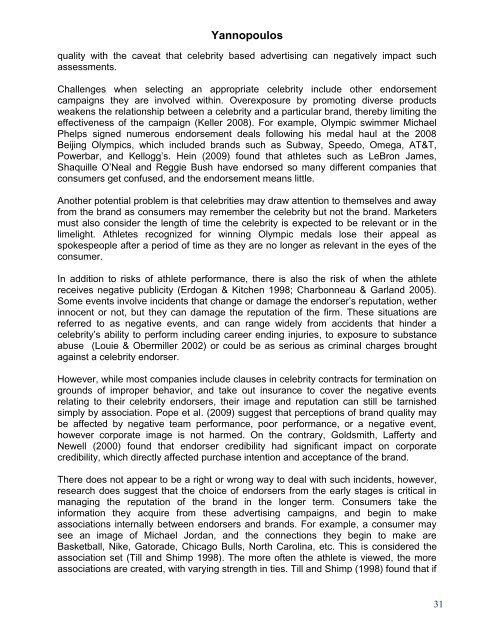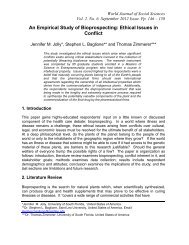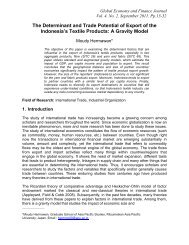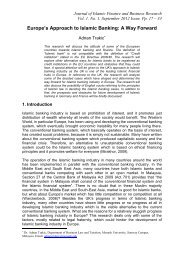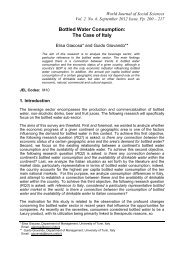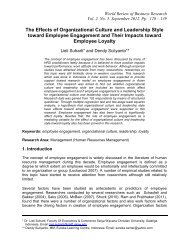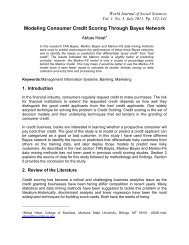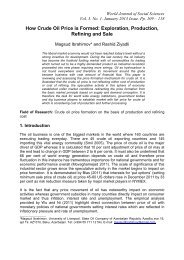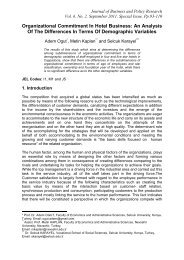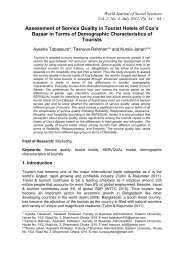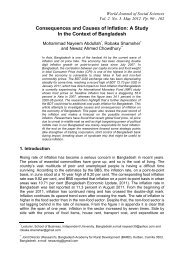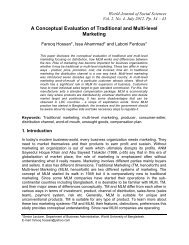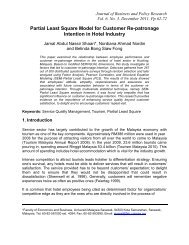Celebrity Advertising: Literature Review and Propositions - Wbiaus.org
Celebrity Advertising: Literature Review and Propositions - Wbiaus.org
Celebrity Advertising: Literature Review and Propositions - Wbiaus.org
Create successful ePaper yourself
Turn your PDF publications into a flip-book with our unique Google optimized e-Paper software.
Yannopoulos<br />
quality with the caveat that celebrity based advertising can negatively impact such<br />
assessments.<br />
Challenges when selecting an appropriate celebrity include other endorsement<br />
campaigns they are involved within. Overexposure by promoting diverse products<br />
weakens the relationship between a celebrity <strong>and</strong> a particular br<strong>and</strong>, thereby limiting the<br />
effectiveness of the campaign (Keller 2008). For example, Olympic swimmer Michael<br />
Phelps signed numerous endorsement deals following his medal haul at the 2008<br />
Beijing Olympics, which included br<strong>and</strong>s such as Subway, Speedo, Omega, AT&T,<br />
Powerbar, <strong>and</strong> Kellogg’s. Hein (2009) found that athletes such as LeBron James,<br />
Shaquille O’Neal <strong>and</strong> Reggie Bush have endorsed so many different companies that<br />
consumers get confused, <strong>and</strong> the endorsement means little.<br />
Another potential problem is that celebrities may draw attention to themselves <strong>and</strong> away<br />
from the br<strong>and</strong> as consumers may remember the celebrity but not the br<strong>and</strong>. Marketers<br />
must also consider the length of time the celebrity is expected to be relevant or in the<br />
limelight. Athletes recognized for winning Olympic medals lose their appeal as<br />
spokespeople after a period of time as they are no longer as relevant in the eyes of the<br />
consumer.<br />
In addition to risks of athlete performance, there is also the risk of when the athlete<br />
receives negative publicity (Erdogan & Kitchen 1998; Charbonneau & Garl<strong>and</strong> 2005).<br />
Some events involve incidents that change or damage the endorser’s reputation, wether<br />
innocent or not, but they can damage the reputation of the firm. These situations are<br />
referred to as negative events, <strong>and</strong> can range widely from accidents that hinder a<br />
celebrity’s ability to perform including career ending injuries, to exposure to substance<br />
abuse (Louie & Obermiller 2002) or could be as serious as criminal charges brought<br />
against a celebrity endorser.<br />
However, while most companies include clauses in celebrity contracts for termination on<br />
grounds of improper behavior, <strong>and</strong> take out insurance to cover the negative events<br />
relating to their celebrity endorsers, their image <strong>and</strong> reputation can still be tarnished<br />
simply by association. Pope et al. (2009) suggest that perceptions of br<strong>and</strong> quality may<br />
be affected by negative team performance, poor performance, or a negative event,<br />
however corporate image is not harmed. On the contrary, Goldsmith, Lafferty <strong>and</strong><br />
Newell (2000) found that endorser credibility had significant impact on corporate<br />
credibility, which directly affected purchase intention <strong>and</strong> acceptance of the br<strong>and</strong>.<br />
There does not appear to be a right or wrong way to deal with such incidents, however,<br />
research does suggest that the choice of endorsers from the early stages is critical in<br />
managing the reputation of the br<strong>and</strong> in the longer term. Consumers take the<br />
information they acquire from these advertising campaigns, <strong>and</strong> begin to make<br />
associations internally between endorsers <strong>and</strong> br<strong>and</strong>s. For example, a consumer may<br />
see an image of Michael Jordan, <strong>and</strong> the connections they begin to make are<br />
Basketball, Nike, Gatorade, Chicago Bulls, North Carolina, etc. This is considered the<br />
association set (Till <strong>and</strong> Shimp 1998). The more often the athlete is viewed, the more<br />
associations are created, with varying strength in ties. Till <strong>and</strong> Shimp (1998) found that if<br />
31


